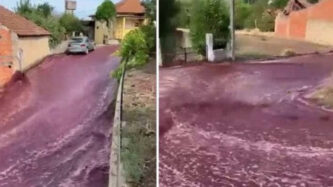Tess Brunton of RNZ | Nov 08 2023

Imagine virtual wine tastings from 31,000 feet, robot room service and exploring countries from the comfort of a couch. That’s what the tourism industry is exploring with new technology emerging at a rapid pace.
Hundreds of industry leaders have been discussing if they are ready – or not – at the Tourism Summit Aotearoa in Te Whanganui a Tara Wellington on Tuesday.
The robot revolution has already arrived at Sudima Hotels, and chief operating officer Les Morgan said they were handy helpers to have around. “Now with the addition of a service bot, it is possible to get a cocktail to your door without having to speak, smile or put on pants for a stranger.”

One hotel has two service robots, serving 90% of orders. “Their hours are equal to about 1.5 (full-time equivalents) or approximately $90,000 per annum in wages. “They require no induction, no training, no staff meals, no leave.”
Morgan said he did not want hotels to become sterile, staff-free places, but the robots had their uses and could save time.
From next year, Sudima will introduce specialist robots to clean common areas and act as helpers for staff to transfer linen and products.
Sky Motion uses virtual reality to help people explore places they may never have travelled to before.
Director Soraya Sarwary described it as immersive storytelling, using 360-degree sights, surround sound, and motion pods. “The way that I best describe it is it feels as if you’re standing in a location, rather than just watching it.
Giving you the freedom to basically look wherever you want and get a
good feel.”
It did not replace travel, but it gave people an immersive preview to help them decide where they’d like to visit, she said. It can also make travel more accessible to those who could not hop on a plane. “I don’t think anything would be able to replace that experience, so as detailed as we can go
into giving people as much of a taste. You can’t get a suntan from this technology.”
Air New Zealand is working with digital bag tags where people can link their luggage to their phones, cutting out the paper printouts and kiosks for check-in.
Chief executive Greg Foran said it had acquired plenty of new technology – both on the drawing board or already here. “Imagine a flight where virtual reality can change your perception of time, offering mindfulness, meditation and ambient lighting to aid sleep.
“Picture yourself playing a cabin-wide game and watching a movie alongside your family while they’re still at home on the couch. Virtual wine tastings set against stunning New Zealand backdrops.”
The airline is keeping an eye on supersonic and hypersonic travel, which is five times the speed of sound.
In the shorter term – about three years away – its first commercial electric plane is expected to take flight. “We’re investigating the role of drones as it may pertain to Air New Zealand and our role in connecting people, and then also single-seater electric planes that require no licence – other than a
few hours’ training – but can replace short-distance car travel.”




















